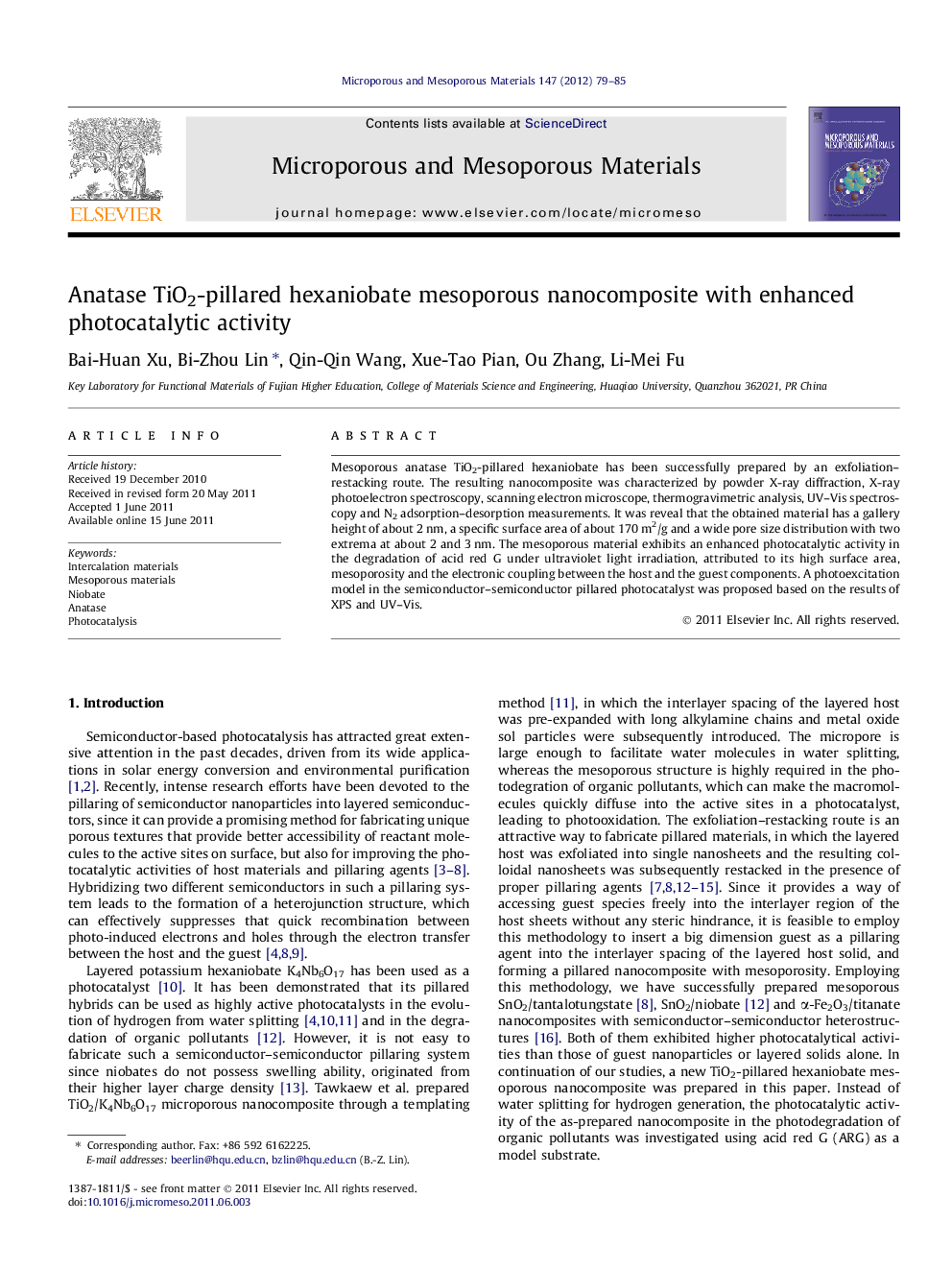| کد مقاله | کد نشریه | سال انتشار | مقاله انگلیسی | نسخه تمام متن |
|---|---|---|---|---|
| 74574 | 49095 | 2012 | 7 صفحه PDF | دانلود رایگان |

Mesoporous anatase TiO2-pillared hexaniobate has been successfully prepared by an exfoliation–restacking route. The resulting nanocomposite was characterized by powder X-ray diffraction, X-ray photoelectron spectroscopy, scanning electron microscope, thermogravimetric analysis, UV–Vis spectroscopy and N2 adsorption–desorption measurements. It was reveal that the obtained material has a gallery height of about 2 nm, a specific surface area of about 170 m2/g and a wide pore size distribution with two extrema at about 2 and 3 nm. The mesoporous material exhibits an enhanced photocatalytic activity in the degradation of acid red G under ultraviolet light irradiation, attributed to its high surface area, mesoporosity and the electronic coupling between the host and the guest components. A photoexcitation model in the semiconductor–semiconductor pillared photocatalyst was proposed based on the results of XPS and UV–Vis.
Mesoporous anatase TiO2-pillared hexaniobate was prepared by an exfoliation–restacking route. The nanocomposite exhibits an excellent photocatalytic activity in the degradation of acid red G.Figure optionsDownload as PowerPoint slideHighlights
► Fabricating a heterojunction structure by an exfoliation–restacking route.
► Anatase TiO2-pillared hexaniobate processes a mesoporous texture.
► The pillared nanocomposite exhibits an excellent photocatalytic activity.
► A photoexcitation model was proposed based on the results of XPS and UV–Vis.
Journal: Microporous and Mesoporous Materials - Volume 147, Issue 1, January 2012, Pages 79–85